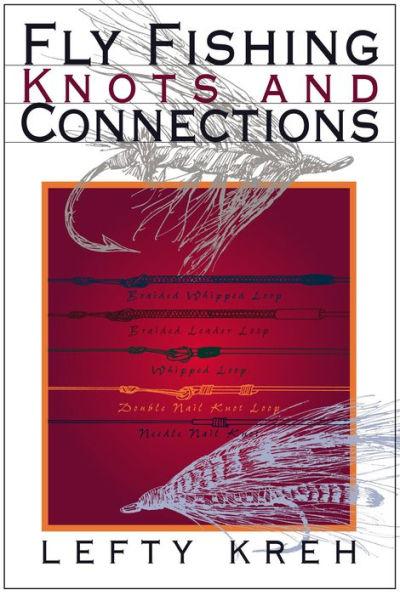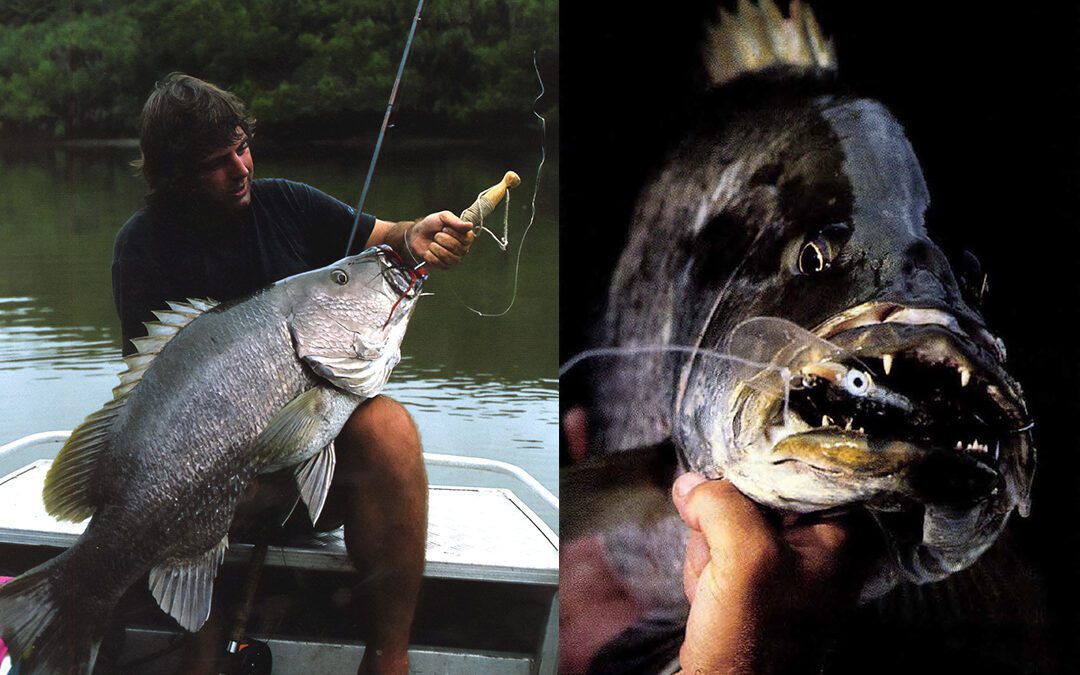After five years of guiding anglers through jungle waterways in Papua New Guinea, the expression I now saw on the faces of Australian Jim Allen and Texan Joe Doggett was a familiar one. I was describing the arm-wrenching strength and shock tactics of black bass, and the globetrotting outdoorsmen were absorbing my words with a look that said, “Yeah buddy, tell it to the rookies.”
We were several hundred miles up the Niugini River, one of the many waterways that fray the Gulf of Papua on the main island’s southern coast. It was my favorite bass river, and yet as we entered the second day of an expedition that involved a nine-man film crew, two hotshot anglers and their hotshot guide (me), no black bass had shown up to wipe the worldly sneers from their doubting faces. But they’d be wiped, I was certain. Simply a matter of time.
As someone who specializes in fishing remote Southern Hemisphere waters, I’ve had more than my fair share of rumbles with black bass. The fish is a thug, no question, a brutal opponent that can get the best of an unwary angler in a nanosecond. And as a self-appointed, quasi-expert on the species, I enjoy sharing my thoughts on these fish to anyone keen enough, fool enough or drunk enough to listen.
A couple of days into filming the black bass segment for Clear Water Big Fish, an international video production featuring golf superstar Greg Norman and guest anglers from the U.S., my expounding was starting to sound like the desperate patter of a fight promoter after a Mike Tyson no-show. The big bass were playing hard to get. Downright camera-shy, in fact.
Setting out daily in 25-horse-power fishing punts from an 80-foot, air-conditioned mothership, we were exploring a massive river system in which the fish were transients. The rivers of Papua New Guinea can change radically with each torrential wet season, and the best “honey holes” are often short-lived, which requires constant reconnaissance of the riverscape.
After a morning’s wandering and fruitless casting at likely snags – a pleasant enough exercise, but not one recommended with an anxious camera crew in attendance – I suggested we troll around a limestone pinnacle that jutted upward some fifty feet above the river.
My sounder revealed a ledge rising to within a few feet of the surface. I encouraged Joe Doggett to bump his lure up the incline, and as I watched him retrieve, I suddenly heard an animal grunt from behind me. I turned to see Jim Allen straining hard against his mega plug rod, which was bent almost double. The struggle was remarkably brief, and when the 25-lb. monofilament snapped, Jim’s sturdy frame nearly recoiled out of the boat. Bass 1. Hotshot Anglers 0.
Like a hyped-up Gomer Pyle, Doggett whooped out a resounding “Golly!” for the cameramen who had captured the incident, and chuckled aloud at his companion’s saucer-eyed expression. Doggett’s amusement had a nervous edge. He knew that his turn would come. I just hoped that he would fare better than the Texas clients I’d guided here the year before. That team had given up after four days of serious fishing – and not for want of action, for the bass were radically on the chew. The fish were just so aggressive that the good ol’ boys never stood a chance with the gear they used for largemouths back home.
I recall one of the group sitting on the bow while retrieving his plug. Just as he lifted his lure from the water, a big bass struck like a sledgehammer and powered off under the boat. The sharp angle and short line were too much for the rod; the sharp, whipcrack explosion blasted white birds from the treetops and shattered a big Texas ego.
It is a high-octane mix of speed and power combined with a tricky, snaggy environment that makes the black bass such a formidable foe and the ultimate target for lure-casters. When a twenty-pounder surges from cover to wolf your lure, it can be like a needle of adrenaline to the aorta. Some nine years after my first encounter with these fish, I still find it difficult to convey the awesome power of their strike.
My introduction to black bass came in the 1960s, when pioneering Australian outdoor writers first encountered them. But it wasn’t until nearly two decades later that I caught my first bass. The fourteen-pound fish struck my Rapala near the boat, and I landed it in five seconds flat. It never took an inch of my 40-lb. line and didn’t begin to put a bend in the stout rod I’d been advised to use. But over the next two days, I got strikes from twelve more bass and never landed a one. They kicked my butt all over the creek. One fish, which I thought I had turned, dragged my boat into a snag and I popped two rod guides fighting the monster. He got away. But the fisherman was well and truly hooked.
Papua New Guinea’s black bass is a member of the snapper (lutjanis) family, a genus of fish commonly found around the world. It’s closest cousins are the Australian mangrove jack, or mangrove snapper, the cubera snapper, hassar, Moses perch and red bass, to name a few.
Juvenile and young adult phases of the snapper inhabit the mangrove-lined creeks of estuaries and the lower reaches of freshwater streams. In Australia, bigger snappers are found on deep inshore reefs, indicating a migration to offshore habitat as they mature. Both snappers and bass are vicious ambush feeders, blasting out from cover to nail their prey between business-like fangs, then slipping back to cover. Though different in color and size, the fish are similar in appearance, even in so far as displaying an unusual vivid blue line under their eyes as juveniles. But black bass never head for the sea, and somewhere in the evolutionary soup they got an extra big slurp of meanness.
What generally sets the black bass apart from its snapper kinfolk is its beefy size and a bulldog stamina that comes from having evolved in some the planet’s swiftest-flowing waterways. The spine of mainland Papua New Guinea consists of sharply upthrust mountains, their snow-capped peaks accessible only by chopper. Match this topography with an annual average rainfall of twenty feet in some areas, and you have a recipe for rivers than can rise over thi rty feet in a few hours, ripping out large tracks of heavy jungle.
During a trip to the southern coast of New Britain a few years back, Jack Erskine, one of Australia’s most experienced and best-known anglers, was feeling confident after four days of jungle river fishing. He’d taken a string of good-sized black and spottail bass, as well as a thumper of a giant trevally on a little baitcaster and 20-lb. string. Then, one afternoon Jack fired his lure at a snag on the deep side of a river bend.
An excellent caster, he placed the lure just where it needed to be, and as it hit the water I turned way to keep the boat in position. When I turned back a second later, Jack was standing with a blank look on his face and no fishing rod in his hands. In the blink of an eye, the rod had been torn from his very practiced grip.
I have seen black bass up to forty-seven pounds and believe they may grow to as much as eighty, but such specimens would be rare indeed. I’ve heard stories of hundred-pound fish, but the tales were never told by eye witnesses, usually by men seeing double as the tide ran out on another rum bottle. I have caught a few bass with frames that suggested fifty pounds or more, but these fish were in such poor condition that they weighed only in the mid-twenties. The locals call these lapun pis – old fish – that have lost most of their teeth and are withering away. In the marine world, getting to die of old age speaks volumes about a species’ place in the food chain.
I remember an article in a leading American bass-fishing magazine which listed the ten strongest freshwater fish in the world. The Papua New Guinea bass was slotted fifth, behind a South American catfish and an alligator gar, both of which grow to more than 300 pounds. The thing that still astounds me is that fishermen were using similar or lighter tackle to catch these giant South American fish than what we need to catch a fish that rarely exceeds fifty pounds. I tend to go along with world-renowned angler Lefty Kreh, who fished in Papua New Guinea in 1989 and ’91, and who pronounced the black bass the strongest fish in fresh and saltwater.
Back on the river, Joe Doggett eventually got his black bass, along with the obligatory whuppin’ time and again during the remainder of the filming expedition. Joe landed several bass weighing up to twenty-five pounds, and Jim Allen boated two that topped thirty. Their struggles, as well as the breathtaking scenery of this remote island paradise, are recorded in the New Guinea episode of the video series.
But there’s a sad footnote to all this. The new video may well be the first and last filming of the region’s savage, untouched beauty. In this financially unstable Third World nation, I have seen the realm of the black bass shrink tragically in less than a decade, primarily from indiscriminate logging by foreign interests.
The first years of the twenty-first century may prove the last for the mighty black bass as the primordial jungles are cleared and the rivers become choked with thick red silt. Lately, I can’t watch the black bass episode without experiencing strong emotions of pride and sadness. Pride at having witnessed such beauty and participated in such adventure, and of course sadness that such magnificence is being forever devastated, even as I watch.
 Fly Fishing Knots and Connections
Fly Fishing Knots and Connections
Click Here to Buy Now
Legendary fly fisherman Lefty Kreh tells anglers everything they need to know about what may be the most crucial aspect of successful angling-the connections between the reel, backing, fly line, leader, and tippet.

